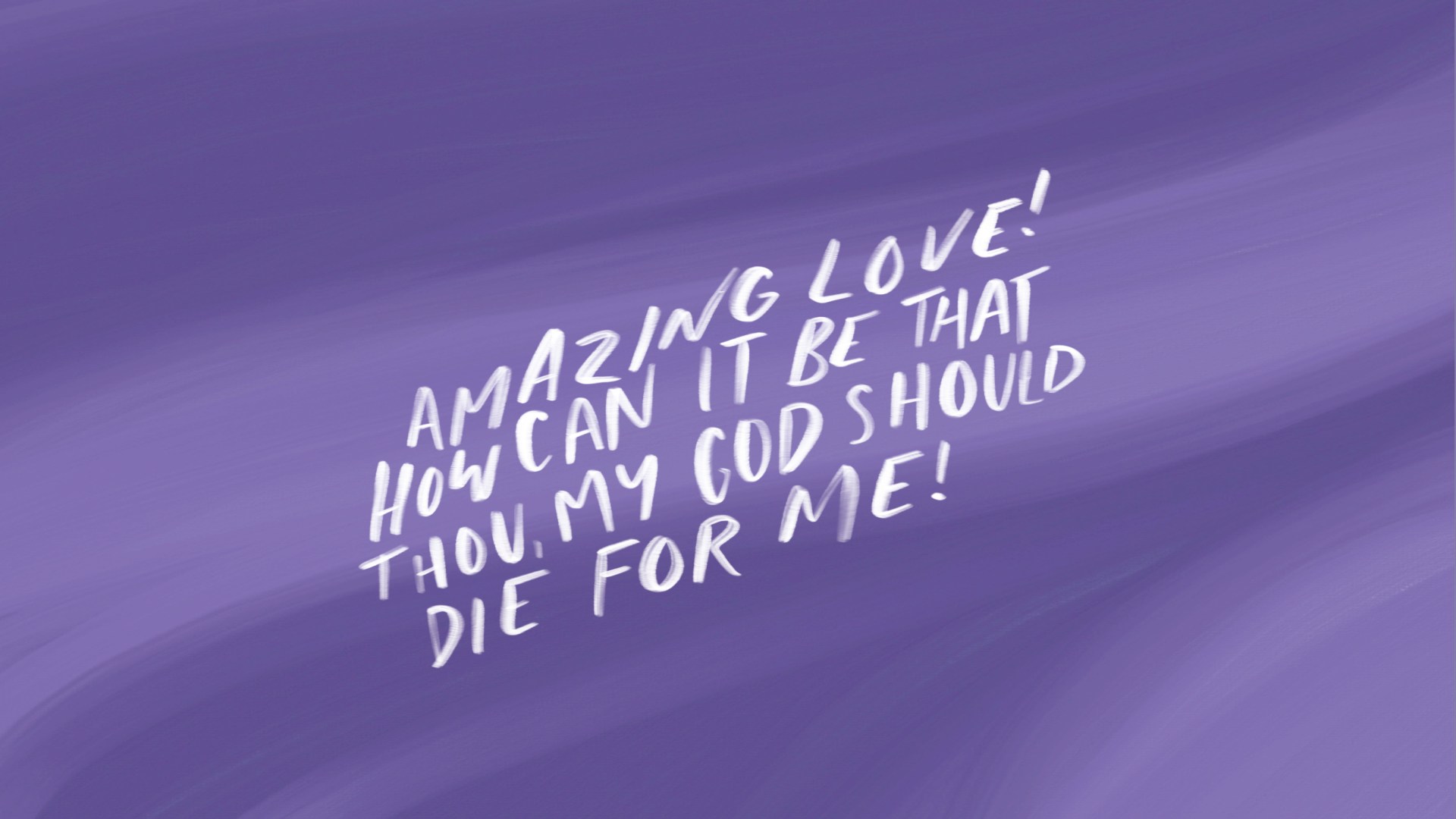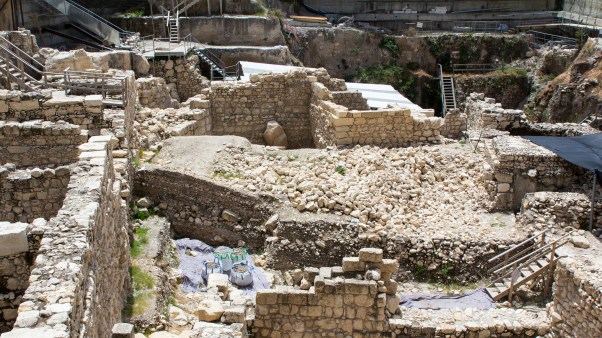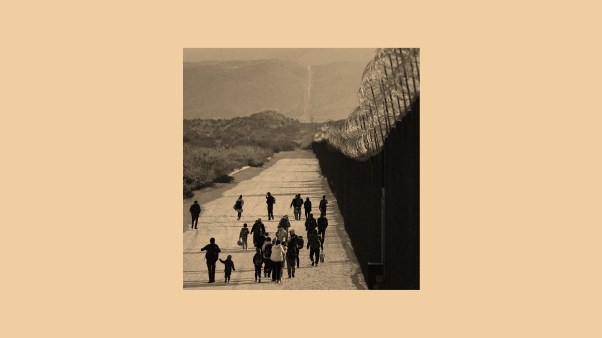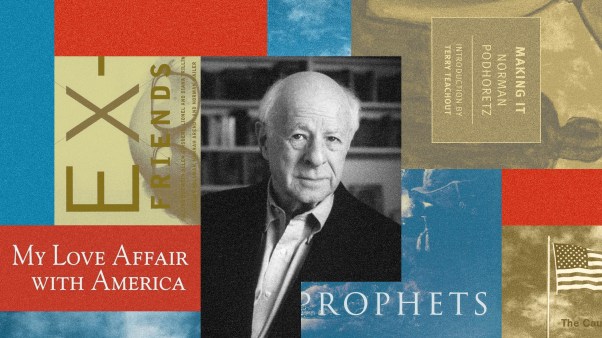Our special issue The Wondrous Cross reflects on eight pieces of music that help us enter into the meaning of Jesus’ sacrifice. In addition to those songs, we’ve asked several Christian leaders—as well as some members of CT’s staff—to share their favorite pieces of music for contemplating the Cross and celebrating the Resurrection. You can listen to all of these songs on our Spotify playlist.
“King of Glory, King of Peace” by George Herbert There are two parts of this song that get me every time. The first is “Thou didst note my working breast, Thou hast spared me.” The physicality of this image—“the working breast” distressed by our own failures—speaks to my experience. God in his mercy spared me. The second is this: “Though my sins against me cried, Thou didst clear me; and alone, when they replied, Thou didst hear me.” God did not hear the testimony of my sins; instead he heard me. These are great comforts during the season. —Esau McCaulley is an associate professor of New Testament at Wheaton College and the author of Reading While Black and Josey Johnson’s Hair and the Holy Spirit.
“Is He Worthy?” by Andrew Peterson I have known and loved Andrew Peterson’s song “Is He Worthy?” up-close in our Nashville community, and it keeps on reminding me to believe the story of Easter again and again. The simple, call-and-response style of the chorus is a way of saying the truth, asking the question, saying the truth. As many times as it takes, we keep singing this story of hope. —Sandra McCracken is a singer-songwriter, a CT columnist, and host of the CT podcast Steadfast.
“Kyrie” by Les Troubadours du Roi Baudouin One of the songs I like to listen to during Holy Week is “Kyrie,” from the album Missa Luba. On this album, a choir of Congolese children and adults sing parts of the Latin Mass in the musical styles of the Democratic Republic of Congo. “Kyrie” means “Lord, have mercy,” and this version is sung in the traditional style of a mourning song. It’s fitting for the kind of language that finds itself on our lips not just on Good Friday but all week long as we anticipate the fulfillment of God’s mercy on the cross. This setting of the “Kyrie” has a haunting and plaintive quality that helps me feel my own desperate need for God’s mercy afresh. —W. David O. Taylor is associate professor of theology and culture at Fuller Theological Seminary and author of Open and Unafraid.
“Redeemer” by Nicole C. Mullen This song always takes my often-restless heart and holds it still. My redeemer lives. The Lamb wins. Whatever I see now will not be how this ends. —Heather Thompson Day is associate professor of communications at Andrews University and host of CT’s Viral Jesus podcast.
“Be Thou My Vision,” an Old Irish prayer translated by Mary E. Byrne Great old hymns carry a long, beautiful memory. The memory of the millions of people who have sung this text over thousands of miles and hundreds of years keeps growing as we add our voices to the unending song of God’s people. When I sing this hymn, it lifts my heart and mind and soul to what the rescue of Christ on the cross brings to every generation: the only way out of the darkness into his glorious light. This true light transforms how we see this life and the next. It illuminates the path to pure hope and life and joy with the risen Savior, the high King of heaven. —Kristyn Getty is a modern hymn writer, worship leader, and recording artist.
Christ lag in Todesbanden, a cantata by Johann Sebastian Bach This highly dramatic musical sermon by J. S. Bach features aching pathos, dramatic tensions, and euphoric, triumphant joy. In this version, conductor Maasaki Suzuki leads the Japan Bach Collegium in Bach’s cantanta that features Martin Luther’s poetry. Luther’s words are drawn from a Latin hymn written in about 1050 for Easter liturgies with roots deep in the early church. At once bouyant and weighty, joyful and deep, this music immerses us in the Bible’s own profusion of images and metaphors that explore the meaning of Jesus’ death and resurrection. I first performed in a choir that sang this music over 30 years ago —and it still echoes in my soul. —John D. Witvliet is director of the Calvin Institute of Christian Worship and a professor at Calvin University and Calvin Theological Seminary.
“Eat This Bread” from the Taizé community I have always loved the Taizé song “Eat This Bread.” I was first exposed to it at the Taizé community in France many years ago. To me, this song feels like a beautiful invitation to Christ’s table and to feed on him through the Eucharist. Like Cleopas and his companion (Luke 24:13–35), I hope to behold Christ at his table. —Ken Shigematsu is senior pastor of Tenth Church in Vancouver, British Columbia, and author of God in My Everything.
“Now Behold the Lamb” by Kirk Franklin and the Family It’s a well-known fact in my family that I cry literally every time I hear Kirk Franklin and the Family’s “Now Behold the Lamb.” A beautifully arranged, soulful gospel song gets me every time! And Tamela Mann never disappoints. Though originally appearing on a Christmas album, this song celebrates “the precious Lamb of God, Born into sin that I may live again.” The soloists powerfully testify and praise Jesus as the Lamb of God who washes away our sins and sets us free. This saving work of Christ required his sacrifice on the cross for our redemption; hence the song ends by extolling Jesus for his love demonstrated when he shed his blood on the cross at Calvary. —Kristie Anyabwile is the author of Literarily and editor of His Testimonies, My Heritage.
“I Am Living in a Land of Death” by Citizens Though their style is different from the music I make with Prisims, the band Citizens has deeply and sacredly encouraged me through their lyrics and music. “I Am Living in a Land of Death” is an anthem and psalm that helps me fix my eyes on Christ the risen Lord while feeling “the breezes of death” in our culture, our flesh, and the brokenness of humanity. The potent lyrics alluding to the work of Christ are captivating and bring me to worship the Lord with hope. —Esteban Shedd is MC of the hip-hop trio Prisims and creative director of Streetlights, an urban culture audio Bible.
“Con Tu Sangre” by Marcos Witt Marcos Witt has been one of the preeminent worship leaders (and pastors) in Latin America over the past four decades. He released “Con Tu Sangre” (Spanish for “With Your Blood”) over two decades ago, and it remains a powerful anthem in the catalogue of Spanish-language musical worship. The lyrics describe how Jesus, by shedding his blood at Calvary, has redeemed people from every lineage, tribe, tongue, and nation. “Con Tu Sangre” inspires me not only during the Easter season, but throughout the year, reminding me of the great cost of what God has done to secure salvation not only for me but also for a huge global, multinational, multiethnic, and multicultural family—the beautiful body of Christ. He is risen! —Imer Santiago is a recording artist and the director of worship for Urbana 2022.
Agnus Dei, composed by Samuel Barber I remember hearing Agnus Dei by composer Samuel Barber (1936) for the first time in a choral ensemble class I faked my way through. I could not (and still cannot) read music, but I love beautiful harmonies. Hearing Agnus Dei performed by the ensemble brought tears to my eyes. Even though I had no idea what they were singing about, my heart understood: Agnus Dei, the Lamb of God. —Liz Vice is a gospel, soul, and R&B recording artist.
“Jésus le Christ” from the Taizé community Translated into English, this song says, in part, “Your light shines within us, Let not my doubts nor my darkness speak to me.” Hours before a close friend betrayed him, Jesus prayed an anxious, lonely prayer, crying out for relief. Over the course of our lives, many of us will call on God in moments when the heaviness of our circumstances appears to have begun pushing us under the water. We can utter these groans with the realization that Christ himself prayed through visceral pain and that this same man is the Light of the World. —Morgan Pomaika’i Lee is CT’s global media manager.
The Grace Cathedral Concert by Vince Guaraldi The late jazz pianist Vince Guaraldi is best known for giving musical voice to Charlie Brown and his animated cohort. His iconic Peanuts themes were introduced in A Charlie Brown Christmas, first broadcast in December 1965. Earlier that same year, Guaraldi released The Grace Cathedral Concert featuring his trio and a 68-voice church choir leading the congregation at San Francisco’s Grace Episcopal Cathedral in Holy Communion. The concert was considered one of the first instances of a “jazz mass,” and anyone who loves Guaraldi’s music will be captivated by this mixture of original compositions and reinterpretations of sacred hymns. My favorite is “Theme to Grace,” a mostly instrumental track that gently weaves between contemplative and breezy moods before culminating in a burst of choral hallelujahs. The song—and the album—is an expression of resurrection hope. —Ed Gilbreath is CT’s vice president of strategic partnerships.
“The Rising” by Bruce Springsteen On 9/11, as black plumes rose from Manhattan, Springsteen thought he might never sing again. But weeks later, he went down to Ground Zero to watch construction workers, firefighters, and police officers working on the pile. As he left, one recognized him and shouted the familiar “Bruuuuuuuuuce!” He added, “We need ya, Bruce.” “The Rising” (and the album of the same name) was Springsteen’s response to that calling, and this song in particular is an anthem of hope that draws on his deep Catholic roots and points to the Resurrection. —Mike Cosper is director of CT podcasts.
“He’s Alive” by Don Francisco I wrote a whole bunch about Arizona Dranes’s emphatic 1926 gospel blues recording, “Lamb’s Blood Has Washed Me Clean.” Before that, I thought about Luke Morton’s 2011 “The Lamb Has Overcome.” Both songs set my feet dancing. But neither gets a lump in my throat every time I try to sing along. Don Francisco’s 1977 “He’s Alive” does. After years of reflecting on the global and communal effects of Jesus’ death and resurrection and how Jesus came to rescue us, I’ve been remembering more this year that Jesus died for me too. The Lamb’s blood washed me clean. The Easter story isn’t just for me. But it is for me. And no song has hit me harder on that point—no song has shaken me awake to the good news of four and a half decades of Easter mornings—than Francisco’s “He’s Alive.” Does this song still choke me up mostly because of nostalgia? Maybe. I don’t care. The song has been part of my story, and I increasingly find that it tells my story: He’s alive and I’m forgiven. —Ted Olsen is executive editor of Christianity Today.
“Ride On, King Jesus,” an African American spiritual This powerful, exultant spiritual can celebrate various aspects of Holy Week. It sings of Jesus’ triumphal entry into Jerusalem on Palm Sunday, his face set like flint in unhindered determination to go to the cross. Its lyrics can proclaim the victory of Jesus’ resurrection. And the song points toward our future hope: that “great gettin’ up morning” when the dead in Christ shall rise and King Jesus will ride in ultimate victory (Rev. 19). —Kelli B. Trujillo is CT’s projects editor.
Read the article below to view the songs featured in The Wondrous Cross.
You can find our full Spotify playlist below.











